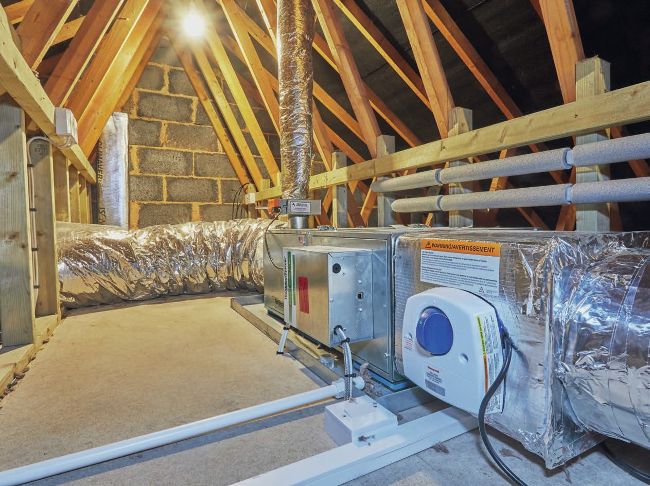PLANNED VENTILATION
HOW TO CREATE A HEALTHY HOME
Rebecca Foster explains why well-designed ventilation is critical for a comfortable house with a fresh internal living environment

The central air handling unit of this Unico system is installed in the loft. The setup comprises a series of small ducts that mix and deliver conditioned air into the living environment
In the drive to keep energy bills to a minimum and achieve increasingly high standards for heat efficiency, self builders and renovators are doing all they can to pack in plenty of insulation and establish an airtight thermal envelope. However, when laying out the plans for your future home, don’t overlook the importance of indoor air quality and the impact it can have on health and wellbeing. If you build a highly airtight house but fail to think through your ventilation strategy, you risk creating an internal atmosphere akin to that of a plastic bag or Tupperware container.
One essential benchmark for a healthy home is a comfortable indoor air temperature that can be achieved in an energy efficient way, in terms of both heating and cooling. But this shouldn’t be done at the expense of air quality. “A healthy home should also manage humidity and airborne pollutants effectively,” says Darren Johnson, managing director at Air Craft. It may surprise you to learn that, in some scenarios, indoor air quality can be up to five times worse than outside a building. “This is due to breathing (CO2), micro particulates, cooking smells and fumes, pet dander, dust mites and volatile organic compounds (VOCs) found in paint and furniture,” says Darren. So, what are the dangers of not planning your home’s ventilation properly, and how can you get it right in your self build?